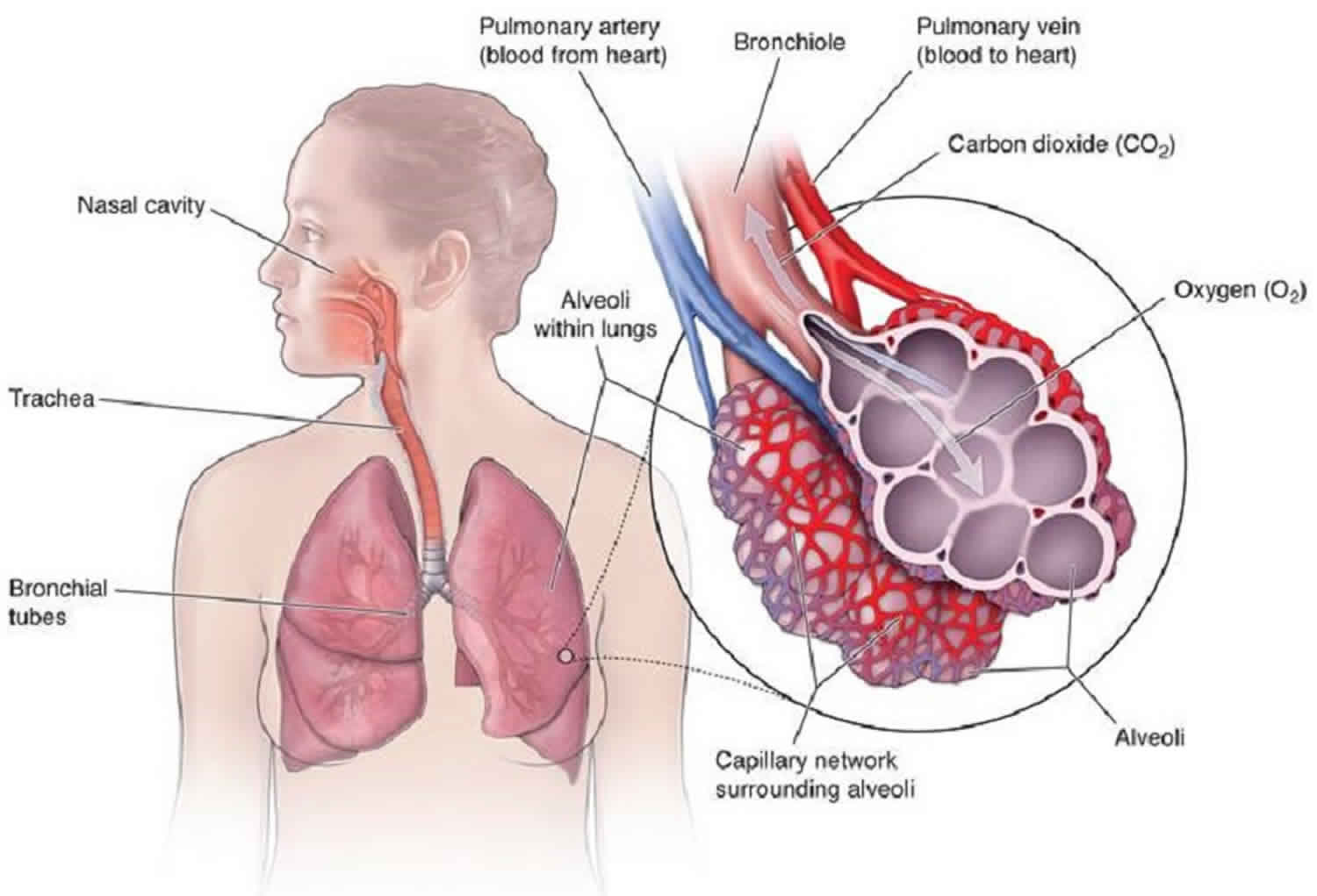Rapid shallow breathing
Many muscles are needed for normal breathing. These include your two diaphragms (muscles that lie between the bottom of your lungs and your belly), the muscles between your ribs (intercostal muscles) and muscles in your neck and throat. A normal breathing rate for an adult at rest is 8 to 16 breaths per minute. For an infant, a normal rate is up to 44 breaths per minute.
Shallow breathing means shorter inhaling and exhaling than normal breathing but with an equal cadence. Shallow breathing is the drawing of minimal breath into your lungs, usually by drawing air into the chest area using the intercostal muscles rather than throughout the lungs via the diaphragm. Shallow breathing can result in or be symptomatic of rapid breathing and hyperventilation. Most people who breath shallowly do it throughout the day and are almost always unaware of the condition.
Tachypnea is the term that your health care provider uses to describe your breathing if it is too fast, especially if you have fast, shallow breathing from a lung disease or other medical cause.
The term hyperventilation is usually used if you are taking rapid, deep breaths. This can be due to lung disease or because of anxiety or panic. The terms are sometimes used interchangeably.
Rapid, shallow breathing should not be treated at home. It is generally considered a medical emergency (unless anxiety is the only cause).
If you have asthma or chronic obstructive pulmonary disease (COPD), use your inhaler medicines as prescribed by your provider. You may still need to be checked by a provider right away if you have rapid shallow breathing. Your provider will explain when it is important to go to the emergency room.
Call your local emergency services number or go to the emergency room if you are breathing rapidly and you have:
- Bluish or grayish color to the skin, nails, gums, lips, or the area around the eyes (cyanosis)
- Chest pain
- Chest that is pulling in with each breath
- Fever
- Labored or difficult breathing
- Never had rapid breathing before
- Symptoms that are getting more severe
Rapid shallow breathing causes
Shallow, rapid breathing has many possible medical causes, including:
- Asthma
- Blood clot in an artery in the lung
- Choking
- Chronic obstructive pulmonary disease (COPD) and other chronic lung diseases
- Heart failure
- Infection in the smallest air passages of the lungs in children (bronchiolitis)
- Pneumonia or other lung infection
- Transient tachypnea of the newborn
- Anxiety and panic
- Other serious lung disease
Rapid shallow breathing symptoms
Shallow breathing means shorter inhaling and exhaling than normal breathing but with an equal cadence. Shallow breathing is the drawing of minimal breath into your lungs, usually by drawing air into the chest area using the intercostal muscles rather than throughout the lungs via the diaphragm. Shallow breathing can result in or be symptomatic of rapid breathing and hyperventilation. Most people who breath shallowly do it throughout the day and are almost always unaware of the condition.
Rapid shallow breathing diagnosis
Your healthcare provider will do a thorough exam of your heart, lungs, abdomen, and head and neck.
Tests that may be ordered include:
- Arterial blood gas and pulse oximetry to check your oxygen level
- Chest x-ray
- Chest CT scan
- Complete blood count (CBC) and blood chemistries
- Electrocardiogram (ECG)
- Ventilation/perfusion scan of your lungs
- Comprehensive metabolic panel to check the body’s chemical balance and metabolism
Rapid shallow breathing treatment
Treatment will depend on the underlying cause of the rapid breathing. Treatment may include oxygen if your oxygen level is too low. If you are having an asthma or a COPD attack, you’ll receive treatment to stop the attack.





